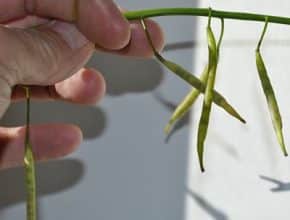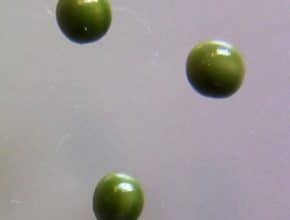A lot of canola hit by frost or swathed in the heat is now stuck with high green counts. Every field is different, so there is no one best answer. Here are a few questions to ask and sample scenarios to consider before making the decision to combine now or give the crop more time…
Canola Watch Posts
-
-
Post harvest weed control can be a valuable step in preparing fields for canola next year, especially if winter annuals and perennials are present in high numbers. Dandelions and thistles, for example, move a lot of energy into their roots this time of year, so fall is an effective time to control these weeds. Here are some tips to improve…
-
A lot of Prairie canola is in a serious storage situation. A crusher has already received one load of 2011 canola with 18% heated kernels. The canola was combined only three weeks ago and was binned dry — but at 30 C or more. Excess heat is dangerous. The Prairies have had two heat waves during this harvest and some…
-
Frost hit many parts of the Prairies last night and earlier this week. The big questions for growers are: How soon after a frost should I swath? Or if I……
-
Peace (B.C. and Alberta): Swathing is nearly complete in the north and at around 50% complete, on average, for the rest of the territory. Rain has slowed progress the past……
-
If you check too early after a frost, the full extent of frost damage may not be evident. The crop may look undamaged that morning but by lunch time, wilting, desiccation and pod splitting may begin. If you scout early and then not again, you may underestimate the damage and miss a chance to swath now to save some of…
-
If the forecast is for frost tonight, growers will not see much benefit to swathing today if canola is still green. With a light frost, crop left standing will still have a chance to mature further. A heavy frost will lock in high green counts unless the crop has adequate dry down time to achieve a seed moisture of 20%…
-
-
Many canola fields that were swathed too early or during hot weather or both will have dried down without sufficient enzyme breakdown of seed chlorophyll, resulting in a high green count. Fields that are dry (less than 10% moisture) and still have 5% green are unlikely to see that green count drop much, unless canola seed moisture rises back up…

